A Portrait Of The Computer Artist
Realtime Dreaming With Mike Newman
Selby Bateman Assistant Editor, Features
"Realtime dreaming" is Mike Newman's description of his computer art. He spoke with us recently about his development as a computer artist and the future of personal computer art.
Newman is quickly becoming one of the recognized masters of computer art. His work has been exhibited worldwide. Many of his computer paintings were featured in Joseph Deken's recent book Computer Images: State of the Art.
Newman, 29, is supervisor of Creative Services for the DICOMED Corporation of Minneapolis, an international leader in precision computer graphics. What started four years ago as a part-time experiment with DICOMED has since blossomed into a full-time commitment to computer art. His paintings were created on a $130,000 state-of-the-art computer design station.
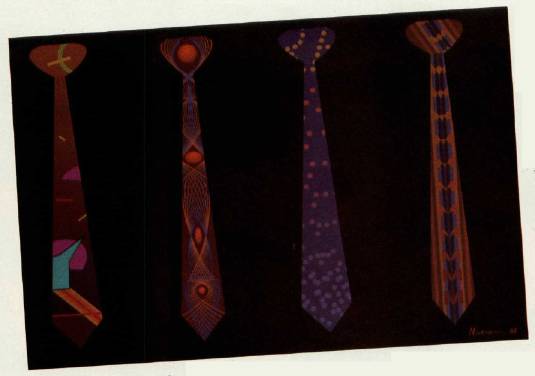
COMPUTE': Will users of personal computers ever have access to the kind of graphics capabilities you've used to create these artworks?
Newman: I see a real connection to the home computer. The first innovations happen in industry for commercial use and for government use, as in the space program. With computer graphics, the same thing applies. The government has been doing a lot with computer graphics and we are using that in a commercial way. Now we're beginning to see this technology being transformed down the tube to the personal computer.
If you look at some of the new paint programs, there are some very interesting products which have already been used in commercial industry. There are a lot of programs coming out these days. And the iconic interfaces are a good sign that the personal computer industry is growing and developing into something that it should be.
On the commercials these days for personal computers, they're trying to tell you that you don't have to be a genius to work them; you don't have to read 25 manuals to understand them.
COMPUTE!: Can the current efforts by personal computer users to create paintings, sketches, and designs be considered legitimate art?
Newman: Look at any of Picasso's sketches, or Matisse. Sometimes they're just very simple lines, that's all. And they're art. We are all artists, it's just that we don't all know it. We all have the potential for producing art.
And for those people who have home computers and sketching programs, they're going to realize that the computer art they made today is not different from other art. The computer didn't make it; they made it using the computer.
COMPUTE!: If the graphics packages we'll use on our personal computers tomorrow are going to emulate your state-of-the-art computer, give us an example of what we'll be using in the future. How do you create your artworks?
Newman: I'll start with the physical aspect, and I think this relates directly to the microcomputer world. What we've tried to do is understand what people need and how people work. So, in our design station, we've incorporated within a fiberglass shell a light table for slides and transparencies; a monitor that swivel up and down and from side to side to reduce glare and give the user more ergonomic viewing angles; and a telephone built into the system [for telecommunicating drawings, etc.].
We've basically eliminated the use of the keyboard, other than for text. So, the keyboard slides in and out from under tri digitizing surface. We've come up with an interface which is very similar to what your reader probably know as the icon interface that the Apple Lisa and the Macintosh have. But we came out with this interface before the Lisa was on the market, and it's in full color.
All of the functions on our design station are executed by picking these icons, or pictograms. For instance, if you want to examine color and work with the color menu, you'd go to a magnifying glass icon that's perched over a picture of a rainbow. And that means to examine color.
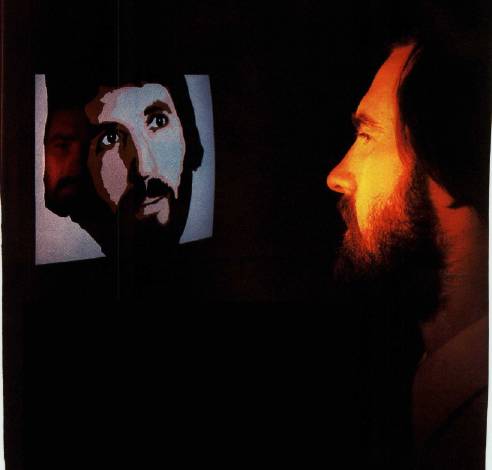
The design station has 640 pixels across on the screen and 480 down. We write everything down on the disk in very high resolution—8000 lines. We can zoom into an area. We don't blow up the frame buffer as on other systems where you get great big pixels, big squares. We read it off a disk and redraw it so that we can actually address the resolution that the film recorder [which turns the image into a color slide] is going to see. So, we have the addressability of that high resolution, which is unique.
Then everything goes directly onto the disk. We have over 16 million colors that we can blend and use on the system. One of the things that we found out early on, and one of the things I was adamant about, was that we don't have to consciously dump the data to disk. We have a continuous disk update system. But you can back yourself up in case you're going in a direction that you don't like and you want to get back to a previous state.
As an artist, you're generally intensely working on something and the last thing in the world you want to do is to remember to save this or that.
COMPUTE!: What's the attraction of computer art?
Newman: The first thing that attracted me was that it took only about ten minutes to understand that this was just another tool, and that you could put a computer and art together. Some people think of the stereotype of a mathematically oriented artist, of which there are very, very few. There are some who do write their own programs and do artwork, but they are in a completely different ballpark. They are artists and scientists at the same time.

I figured if I could do this, then anybody could. It also attracted me that this was not a threat, because the computer wasn't going to do anything without me. It wasn't going to do anything terrific without somebody who knew about art.
COMPUTE!: What made you reach that conclusion?
Newman: When I saw the work that some of the programmers were doing. They weren't doing terrific work[artistically], although one of the programmers does really great graphics because he also likes art.
It became clear very quickly what the benefits were: I could make a piece of art and experiment with it, begin to do things with it, and see that instead of just think about it. In conventional graphics you say "I wonder what this would look like if it were smaller, or turned a little bit?" Whatever the changes—color, position, rotation, duplication—instead of thinking about it, with the computer you can try it. You just do it.
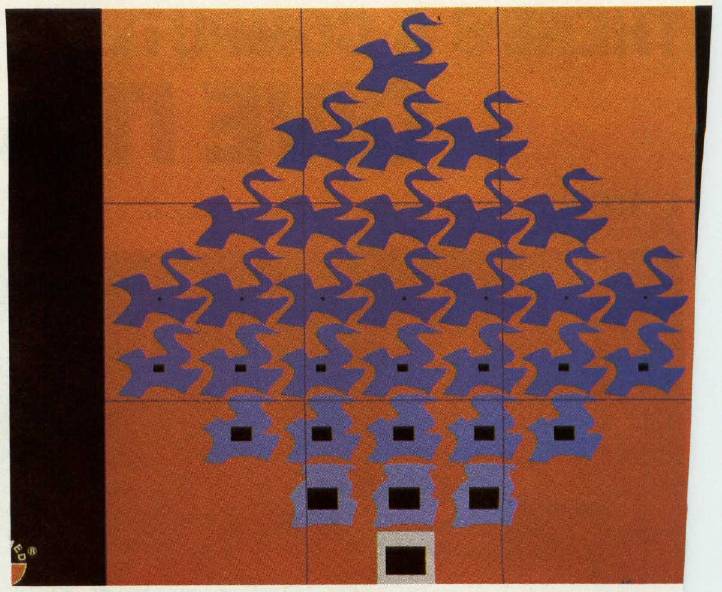
It allows the artist to do real-time dreaming, giving you a much stronger sense of design. It's the same thing with color. The best thing I ever did was to take up watercolors because I had to understand what colors were doing when they were on top of one another, when they were mixed together. And the computer just enhances all that.
Now I blend colors in the same way using the computer, but I can see the artwork. After I have the artwork done, I can begin to play with colors and with shapes. It's like working on a painting and the paint never dries. You can still work with it, but it's more permanent than paint because it's digital on a magnetic medium. So, the permanency is neat, but the flexibility is just remarkable.
COMPUTE!: How do you answer critics who say that computer art is not a genuine art form?
Newman: I think that's a real misconception. People get the opinion that computer art is something done by a computer. In fact I'll read that occasionally "This art was made by computer." Well, that whole concept is wrong. This art was made by human using a computer. You don't say "This photograph was made by a camera." You usually give credit to the photographer and it's the same thing with a computer. Not only that, but the person who wrote the program for the computer did a lot of creative programming. There's creativity there, too.
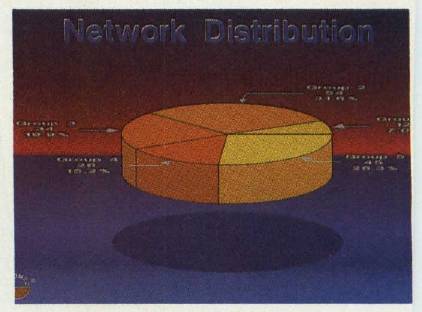
If you look at the wide variety of computer artwork, you can see that it's not just taking a picture and doing image processing, like distorting a picture. It's starting from nothing, a blank screen. Instead of a piece of paper, you have a video screen. And you work with shapes and colors and light and textures and all of the conventional things that we know about art. And you put these things together.
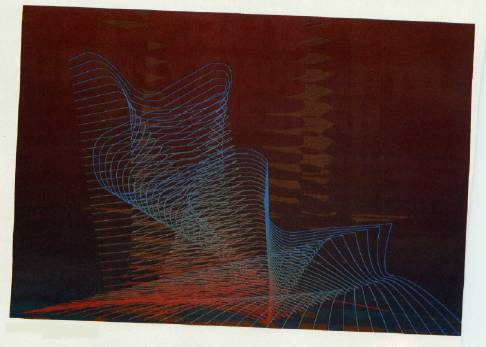
It has human emotional feelings built-in, just as every art form does. That's what makes it art. My work looks different from somebody else's work. That's because emotions are involved, and that's what computers don't have. Without the artist, it just sits there.
COMPUTE!: What influences have contributed to your computer artwork?
Newman: I take in as much information from as many sources as possible. I like to think that my visual artwork is influenced by music as much as it is by other artists. I don't draw boundaries between dance and literary art and visual art. To me, it's all-encompassing. So I may have a visual depiction of a song, or music may have a certain effect on me that will give me a different sense of color for a particular design.
I am, however, influenced by other artists. I'd say the first computer artist—who was a computer artist without a computer—was M.C. Escher. This gets back to saying that computer art is not necessarily art made by computers. It's art made by humans. If you look at Escher's work, it was made by the "computer" that he carried around with him. To me, he is the first computer artist. The difference is that he didn't have a computer.
Also, I'm very influenced by design technology—the revolutionary. Buckminster Fuller, although he wasn't an artist in the conventional sense, had a lot of influence on my work. And a host of a thousand musicians and other artists. [Laughs] In an unconscious way, I'm affected by everything that I see—Andy Warhol, James Wyeth—I enjoy everything.
COMPUTE.': What advice would you give those who want to get started in computer art?
Newman: The first thing you want to do to be a computer article is to be a good artist. You can learn the computer part, but it's hard to develop artistically. Whether you do it in art school or on your own, develop the artistic talent first.
I was not willing to become only a fine artist, because I was afraid that I would wind up being a starving artist, and that's not what I wanted in life. Some people feel so committed to the work they're doing that they'll take that. Those are conventional decisions you make about art, and they need to be made.
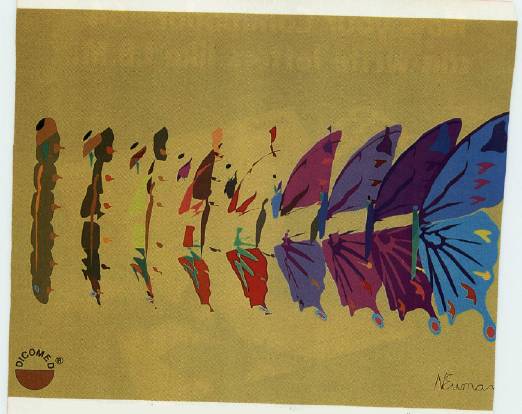
There are some schools in the United States and Canada now that are beginning to have computer graphics programs. They will give you a good overview of the types of systems that are out there, and also give hands-on experience on the equipment so that they know what computer graphics is all about.
COMPUTE!: What are the limitations in computer art?
Newman: There's no medium that does everything. The more painterly aspects of art are hard to simulate. In order to get the high resolution we have, we're based on what we call graphic primitive shapes. You tell the computer you want to make a line, and it knows you want to make a line. You tell it you want to make a perfectly round shape, and it expects you to tell it if you want a full round shape, how big it's going to be, and where it's going to start and stop.
There are other systems that work on a property of more painterly aspects, and these systems are called paint systems. They're more like what you see on personal computers these days. That is, you say you want to make a brush that is this fat and you want it to be this color, for instance.
The only problem is that you're just concerned with which little lights [pixels] are on and off, and it's hard to translate that into high resolution. You can't just take a display, even if it's a high-resolution display, and, say, double it and expect it to look better.
I do feel, however, that at some point this won't be a problem. I still consider this medium to be in its very beginning stage We're just coming out of the basement now. All I know is that as an artist who has access to computers, I have a lot to look forward to. And I expect many great things to occur.